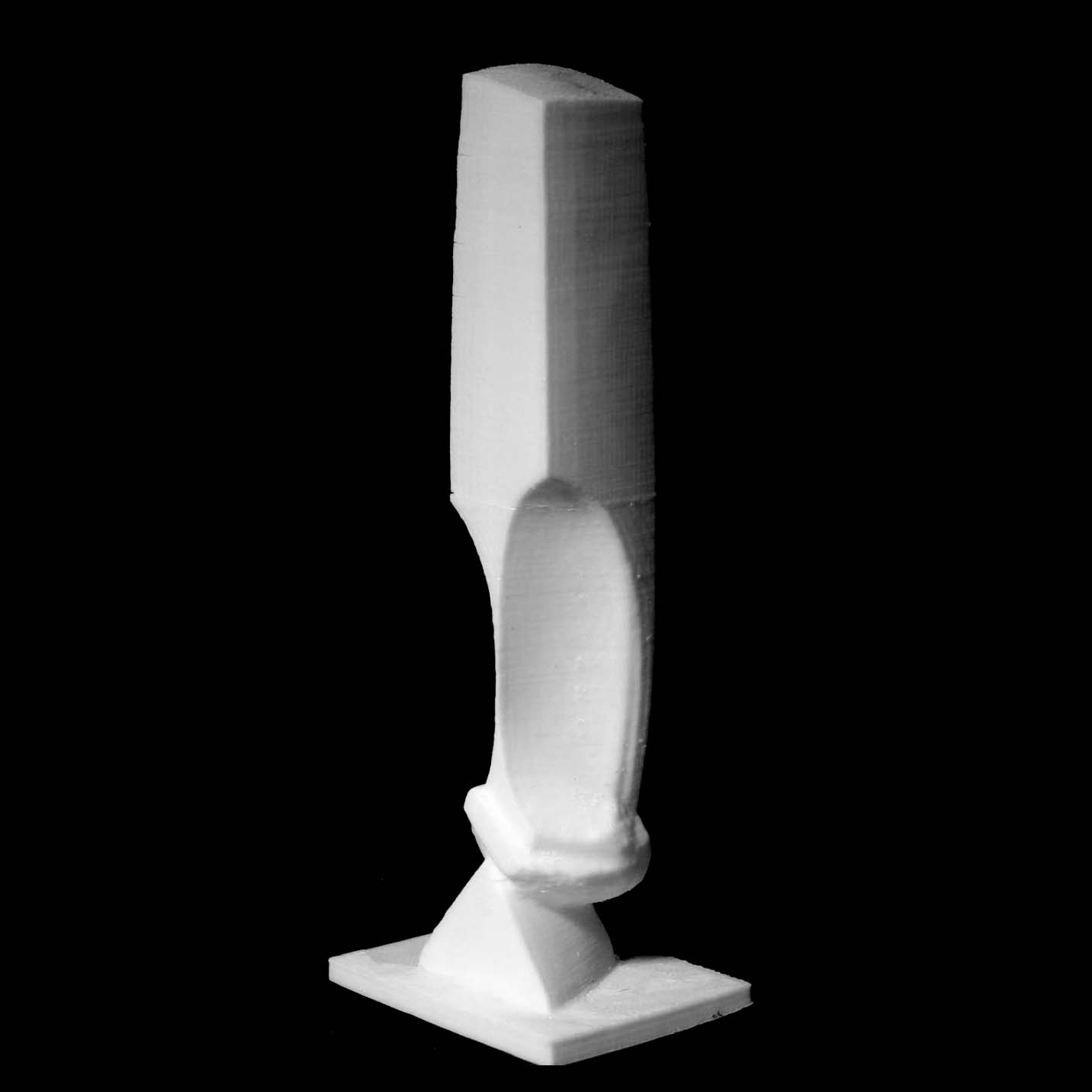
Night Texture at the Middelheim Museum
myminifactory
Masayuki Nagare, a renowned modernist Japanese sculptor, was born on February 14, 1923. Nicknamed "Samurai Artist" for his dedication to traditional Japanese aesthetics, Nagare was born in Nagasaki to Kojuro Nakagawa, the founder and president of Ritsumeikan University in Kyoto. As a teenager, he received training in the martial arts of a samurai, particularly swordsmanship, and lived in several temples in Kyoto, where he observed the patterns of rocks, plants, and water created by traditional landscape artists. In 1942, he enrolled at Ritsumeikan University, where he studied Shintoism and was apprenticed to a master swordsmith. He left university in 1943 to join the Imperial Japanese Navy and did not return to complete his studies. Nagare served as a Zero Fighter pilot in the Pacific War. After the war, he traveled extensively throughout Honshu Island until the mid-1950s, witnessing the devastation of the ruined countryside, developing a deep understanding of the Japanese landscape, and becoming interested in local crafts such as pottery. His fascination with graveyard tombstones that had survived wartime bombing led to his lifelong preference for stone as his primary medium. Nagare's art is heavily influenced by Shintoism, Zen Buddhism, and traditional Japanese martial arts. His principal stone-carving techniques include warehada ("cracked skin" or "broken texture"), in which the surface is left rough with visible chisel marks, and shinogi awase ("ridges joined together"), which describes the meeting of two highly polished surfaces. Some of his works showcase the contrast between the two techniques. His sculptures' clean lines often follow the subtle curvature of Japanese swords. Nagare's notable works include "Cloud Fortress," which survived the 9/11 attacks at the World Trade Center (New York City) but was destroyed in the rescue and recovery efforts, "Sakimori" (Frontier Guardian) installed in the Honolulu Museum of Art, “Hamaritsurin Garden” in Seto Ohashi Commemorative Park (Kagawa Prefecture, Japan), "Receiving" stored at the Museum of Modern Art in New York City, and "Transcendence" (informally called "The Banker's Heart" by locals) installed in A.P. Giannini Plaza at 555 California Street (formerly the Bank of America building) in San Francisco, California. This object is part of the "Scan The World" initiative, a non-profit project introduced by MyMiniFactory, which aims to create a digital archive of fully 3D printable sculptures, artworks, and landmarks from across the globe for public access. Scan The World is an open-source community effort, and individuals with interesting items can contribute by emailing stw@myminifactory.com to find out how they can help. Scanned using photogrammetry, processed using Agisoft PhotoScan.
With this file you will be able to print Night Texture at the Middelheim Museum with your 3D printer. Click on the button and save the file on your computer to work, edit or customize your design. You can also find more 3D designs for printers on Night Texture at the Middelheim Museum.
